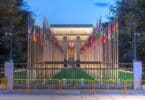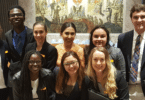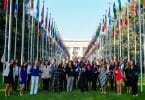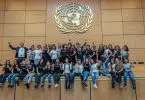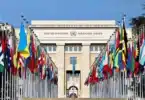Can Human Rights Bring Social Justice? 12 Essays
Technically this is a collection of 12 separate essays, but all of them address the same topic: the intersection of human rights and social justice.
Scholars from countries around the world discuss what human rights and social justice actually mean, the potential for human rights to lead to social justice (or not), and what the role of human rights organizations like Amnesty International is in the conversation and practice of human rights law and social justice. Each author offers a unique perspective, some positive and some critical, on the topic and covers a specific aspect of the topic to help create a whole picture.
Women’s Rights are Human Rights
In this publication from the UN Office of the High Commissioner for Human Rights (OHCHR), the contributors explore one of the most fundamental and essential human rights: the rights of women. From the perspective of the United Nations, this publication is a comprehensive overview of the issue of human rights, including the international human rights laws and UN practices related to the topic. Additionally, it talks about specific issues relating to women’s rights, such as reproductive health, standard of living, conflict, violence against women, access to justice, and more. Through each of these specific areas, this report gives examples of the human rights framework in action through real-life cases.
Part 1: So Software Has Eaten the World: What Does It Mean for Human Rights, Security and Governance; Part 2: Digital Disruption of Human Rights
This two-part article from Eileen Donahoe, Director of Global Affairs for Human Rights Watch, discusses the intersection of technology and human rights in an increasingly digital age. Donahoe’s experiences serving with UNHCR, Human Rights Watch, International Service for Human Rights, and Stanford University’s Center for International Security and Cooperation provide a unique and informed perspective on the challenges that technology brings the progression and implementation of human rights. The first article addresses issues related to governance and globalization, and the second article talks about the disparity in human rights that technology can cause and has caused already. For human rights professionals, her articles provide important insight to consider in the implementation and practice of human rights law.
Although this essay was originally a speech from Holocaust survivor Elie Wiesel, it is important reminder of where the world has been in terms of human rights violations, as well as where we should strive to be. While the tenants of the speech are ones that most human rights professionals know, they are also tenants that can be easy to forget in the day-to-day work and the seemingly endless fight for justice. Wiesel reminds human rights professionals, along with the rest of the world, why they shouldn’t give in to indifference when the struggle for human rights is long and difficult. Beyond being an inspiring piece, this speech, and Wiesel’s writings in general, have been key pieces to human rights theory and practice, shaping the ideas and ideals we have today.
Another important historical piece in the human and civil rights movements is Dr. Martin Luther King, Jr.’s “Letter from Birmingham Jail.” In addition to defending the practice of nonviolent protest, the letter also serves as a call to action for people to take direct action against unjust laws rather than to rely or wait on the courts to serve justice. King’s letter is a reminder for all human rights professionals that the road to human rights practice is not easy and is not always black and white. As an essay addressing one of the most fundamental and long-standing human rights issues, racial inequality, this letter is an inspiring and historical reminder for all human rights professionals.

